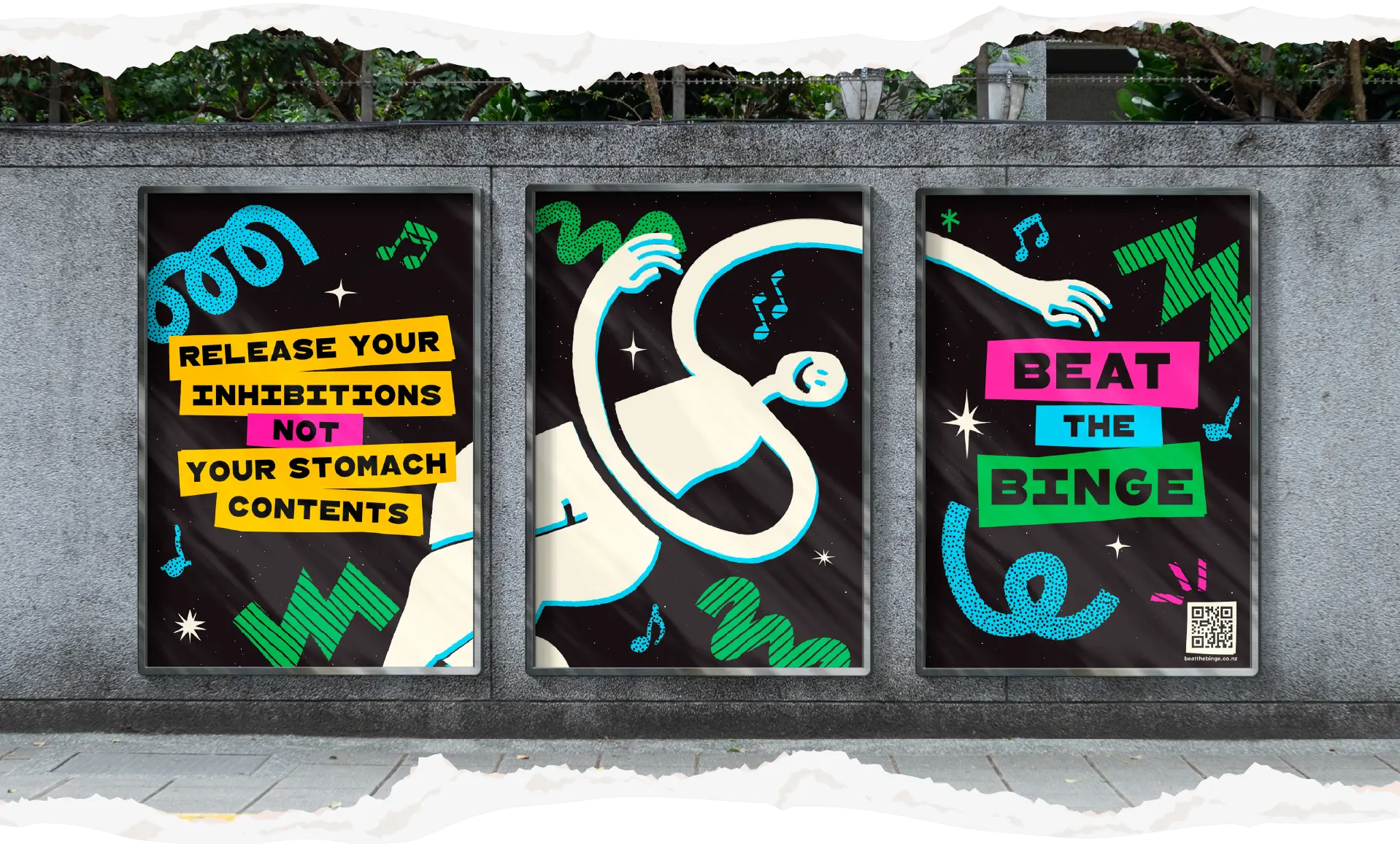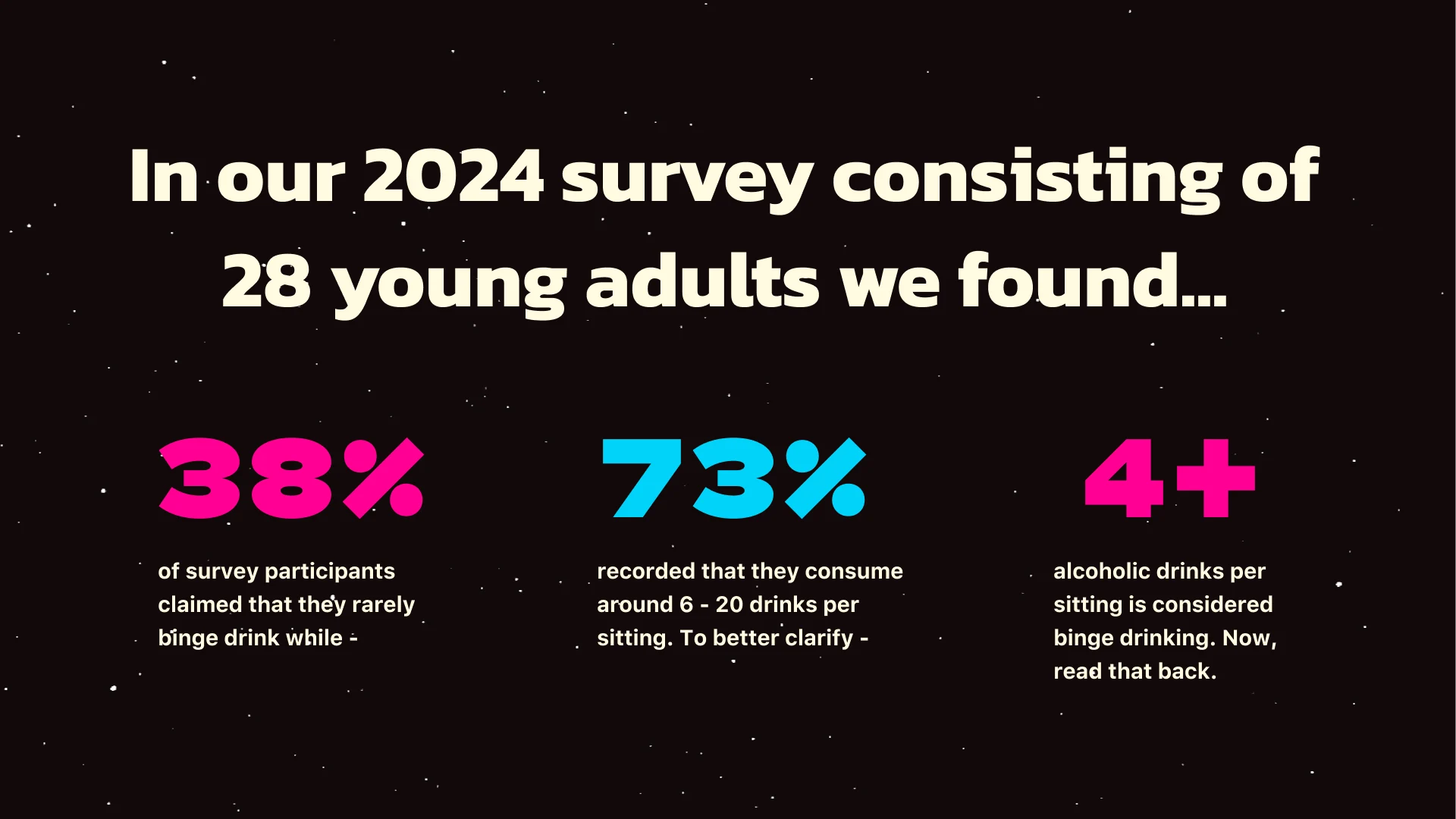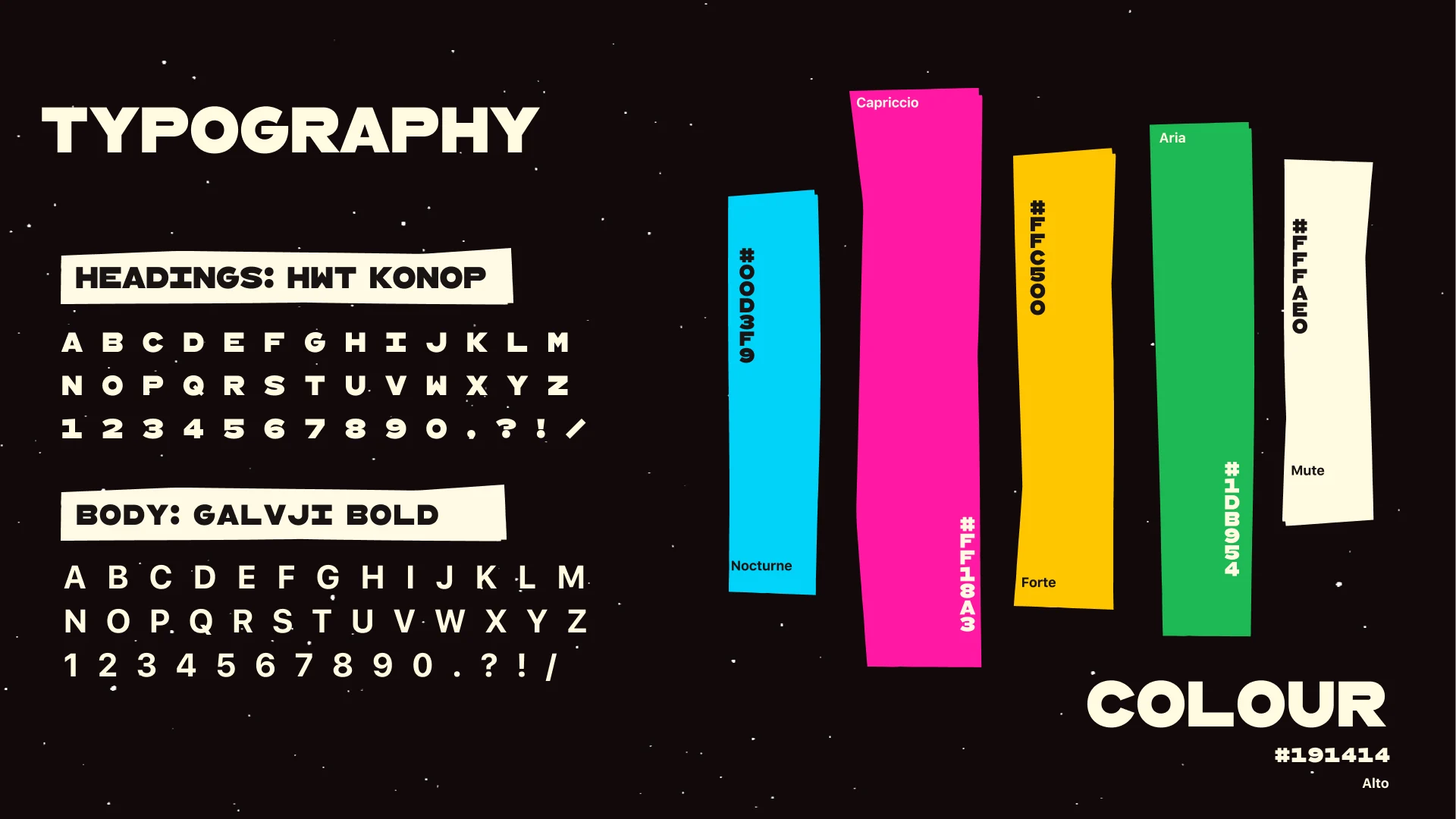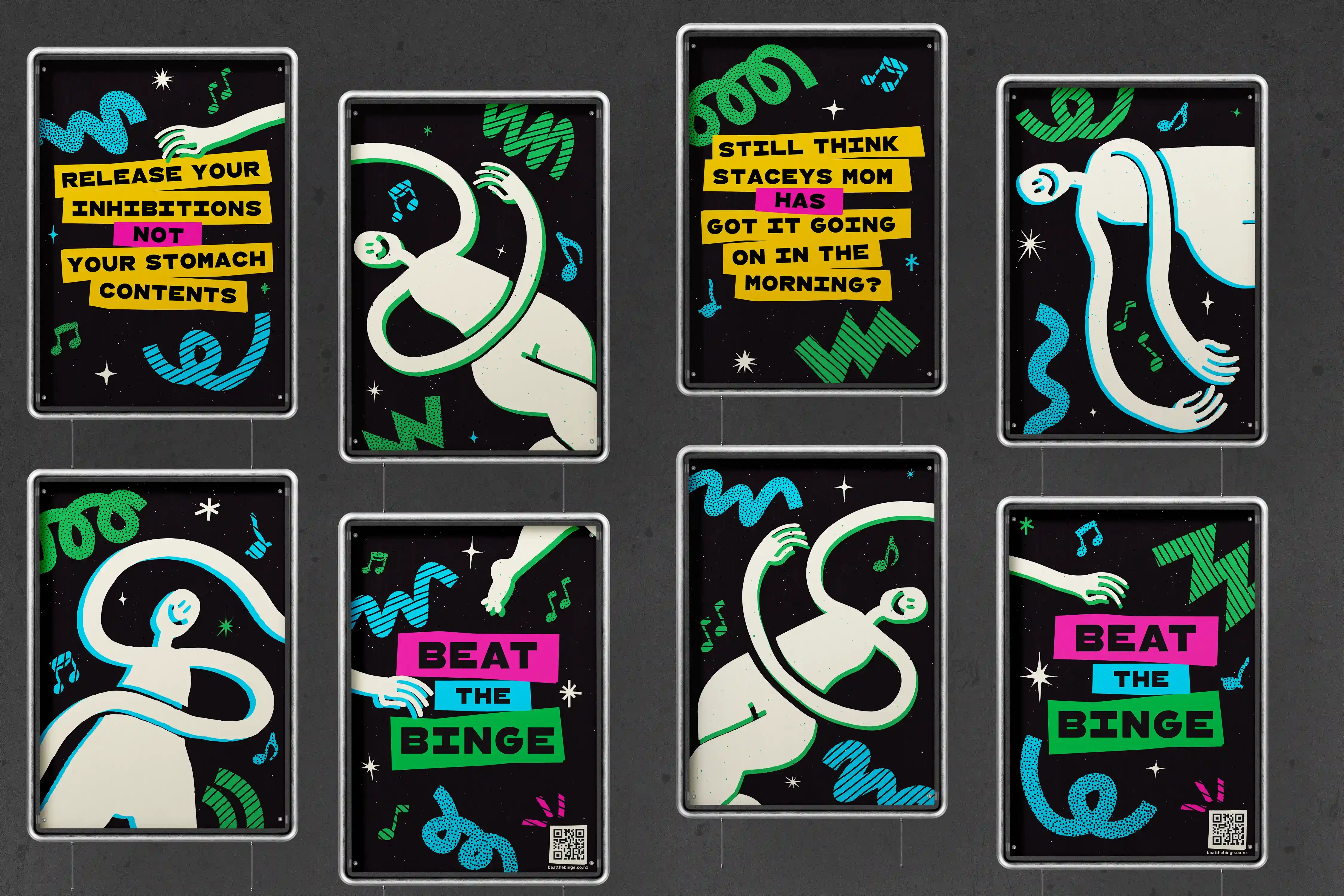Beat the Binge.
Beat the Binge is a social campaign dedicated to tackling New Zealand's prevalent binge-drinking culture, with a specific focus on rangatahi. Emphasising healthier drinking habits over a simple "just don’t do it" approach, this campaign integrates musical themes to effectively engage its target audience.
Process
Procreate, Illustrator, Photoshop
Roles
Graphic Design, Copywriter, Brand Identity
Team
Britt Gray, Saskia Trembath, Holly Bartlett, Harriet Eglinton
Timeline
8weeks
Mission Statement
Alcohol is deeply ingrained in New Zealand's social culture, from cracking a cold one with friends to club hopping in town. However, the fun often stops when someone crosses the line. Recognising that simply telling people to stop wouldn’t work, we needed a different approach. Just like alcohol, music is central to a night out, from the upbeat playlist with friends to the live DJ at the club. Beat the Binge leverages this connection to tell a story, altering the lyrics of favourite songs to feature alcohol-themed messages. Through research, empathy, and ideation, Beat the Binge was born—a bold and daring campaign encouraging Kiwis, especially the younger generation, to slow their drinking.

Target Audience
Young adults from New Zealand aged between 18-24, consisting of all ethnicities and genders who are binge drinking whether they know it or not.

Research
Our research revealed that our target audience responds poorly to aggressive and direct messaging. They value authenticity and transparency, viewing intrusive tactics negatively. This insight was reinforced by our survey results, where respondents identified "better education" and "nothing" as the top factors that would help them make better drinking choices. This led to our key finding: our campaign must use informative but non-abrasive messaging to achieve the best results.

Visual Design
Much like our target audience's music, Beat the Binge’s visual design is loud and designed to stand out. With our peak time to reach our audience being night, we wanted a bold and vibrant brand identity that would draw attention at any hour. Our chunky, organic heading font draws viewers in, reminiscent of clumsy drunk texts, while our more uniform body font provides a more sober read for important information. These fonts are complemented by a bright colour palette reminiscent of dance floor lights, paying homage to the neon lights at night, ensuring we capture our audience's attention.

Element design
Our charismatic mascots radiate a playful spirit, embodying Beat the Binge’s approachable nature as they dance and wave across various platforms. They invite our audience to enjoy their nights out while sticking to their limits. Our bold and robust shapes do more than just reference the phrase “cutting shapes on the dance floor.” They work alongside our mascots to infuse the campaign with dynamic motion and vitality, enticing our audience to get excited for their next binge-free night out.

Poster Design
Beat the Binge employs a cheeky tone of voice to create an approachable solution. Unlike traditional alcoholism awareness campaigns that use direct and aggressive messaging, we recognise that young adults value authenticity and transparency, and find such tactics intrusive. Instead of imposing strict rules, we use relatable, music-themed copy to connect with our audience, referencing popular lyrics to make our message memorable. This message is further brought to life with bold colours, playful illustrations, and our friendly mascot leaping through multiple posters. Through this combination of copy and visual identity, we communicate a loud and lively voice.

The Future
Looking ahead, I envision expanding Beat the Binge’s original concept into pop-up distraction events around popular clubbing areas across New Zealand. By partnering with well-known music brands like Spotify, we could hold binge-free events, enticing our target audience to enjoy a night out without alcohol. Additionally, we aim to establish Beat the Binge as a staple information provider for binge drinking awareness through social media campaigns, similar to the relationship The Level NZ has with regular party drug users. Our goal is to create a more educated demographic with healthier relationships with alcohol.
